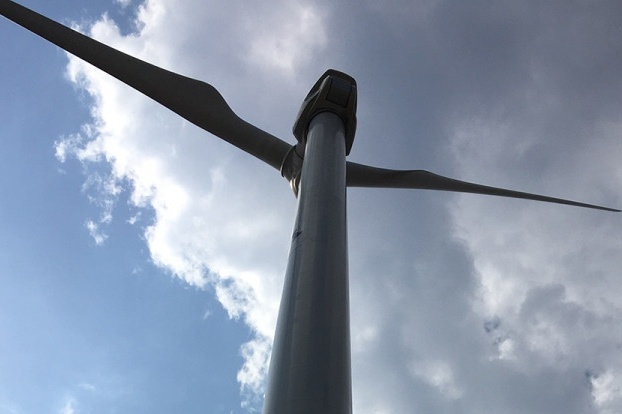Sentient Science doesn’t make wind turbines. We make them last longer. As the Public Relations Manager, I need to be able to visualize what I write about, which is mostly about the prognostics and life extension of gearboxes, bearings and gears.
Yesterday, I had the privilege of accompanying one of our scientists in what was the highest climb of my lifetime. We scaled a ladder 36-stories high to get an up-close look inside of the control tower of a Clipper wind turbine.
Sentient Science builds computational models of the bearings, gears and system components that make up the gearbox. We apply our knowledge of materials science to simulate tests on a virtual test rig to assess and predict the failure rates of the gearbox and components, and then monitor the system with our DigitalClone Live software using actual operating condition data.
We start with the basics though. We research and develop our product by studying the microstructure of the metals and lubricants at the molecular level. We physically cut and halve the components and observe the way the components work together to construct our computational models.
Yesterday, was a research day, and I was excited to be able to partake in the activities. I do not have my Ph.D., but watching one of our 13 Ph.D.s on staff at work was very gratifying.
The day started at the base of the wind turbine where we received our safety guidelines, harnesses and helmets. I am 5 foot 2 inches and have a small frame, so I am feeling the effects of wearing the 20-pound harness today.
As we entered the cabin door, I looked up at the daunting task that was set before me. I had no idea how I was going to climb that ladder all the way to the top, but I was determined to give it my best try. I made it up two ladder rigs, about 15 stories, and then was graciously saved by one of the operations managers who offered to take me the rest of the way in the elevator lift. I know this will ruin my “street cred,” but I just couldn’t physically handle another 20 stories. I have a new appreciation for the crew who are tasked with the system checks and maintenance of the gearbox. The physical work is grueling.
Once we made it to the top, I was amazed at how spacious the Clipper 2.5MW cabin was and at the size of the gearbox and blades. The hum of the generator, although it was turned off, was soothing. The cool breeze from the open garage door, the scent of the air that permeated around us, and the view of the surrounding area was breathe taking. I am so appreciative to the two engineers who took the time out of their busy schedules to allow me to partake in yesterday’s big climb to be able to observe what they do on a regular basis.
I have a new understanding of just how important our DigitalClone software is to the wind industry. At lunch, we discussed how unplanned failures eat into their O&M budgets and how the downtime affects production and revenue. To be able to extend the life of fielded assets is crucial to the sustainability of wind energy production, and Sentient’s small data approach is helping operators who use DigitalClone Live control their costs and increase their revenue, which makes wind energy competitive against other energy sources.
By: Jill Szpylman, Public Relations Manager
To schedule an interview with Sentient Science, please email jszpylman@sentientscience.com
